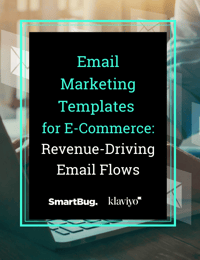
How to Connect with Your Customers Through SMS Marketing at Each Stage of the Buying Process
May 4, 2022
Have you ever visited a store’s online shop for the first time and been prompted by a pop-up to buy from them? That interruption can be incredibly frustrating, especially if you don’t even know what the company is or what you’re being sold.
Targeting messages based on customer awareness is a game of right place, right time, and right person. In our example above, a person who is unaware of the brand will not only avoid purchasing but is likely to be annoyed and associate that feeling with the brand.
The same thing goes for other forms of communication. With SMS marketing, effective messaging requires an awareness of the stages of the buying process. Without it, the messaging might be off-putting, irrelevant, or annoying, causing that customer to avoid your brand in the future.
So, how can you communicate with your customers in a way that’s helpful to them? In this blog post, we’ll detail the stage of customer awareness and how to market to each one by using SMS marketing.
The Five Stages of Customer Awareness
The idea that customers in different stages of awareness need different messaging that contains specific information comes from a theory developed over 50 years ago. Back in 1966, Eugene Schwartz—copywriter, entrepreneur, and author—studied the psychology of buyer mentalities and developed “Customer Awareness Stages” marketing campaign-strategies.
Here are the five customer awareness stages that are still used by marketers today:
1. Problem Unaware
Most buying decisions are based on solving a problem. At the earliest stage, the prospect is unaware that they have a problem, which means that they are unaware of the solution. Regardless of how they found your brand, your job at this stage is to guide them by presenting information that identifies the problem and follows this up with a solution.
For example, Mr. Tortilla is an e-commerce company that sells tortillas and other products that are low net carb and keto-friendly. The problem for consumers? They might not know that there are healthy and keto-friendly tortilla options. It is Mr Tortilla's goal to educate unaware consumers of this, even though the consumer might not know to buy from Mr Tortilla... yet.
At this stage, the brand is also trying to delight the customer with content and promote the brand story so that customers can gain some familiarity with the brand.
2. Problem Aware
The customer who is problem aware knows that they have a problem or desire but do not know the solution. This type of customer is fairly easy to spot. Typically, this customer will find a brand through organic search by entering their inquiry into Google: “How to get in shape.” Or they followed an ad that targets their problem. From there, they begin the search for a solution by entering relevant websites.
3. Solution Aware
The customer who is solution aware knows that there is a solution to their problem or desire but can’t find the product to fit their needs. The solution-aware customer can usually be spotted by tracking how they interact with product pages on a website or the keywords they used to find your website.
For example, they know that they have a desire to get in better shape and that the solution to this desire is by cycling or running. To solve this problem, they need to decide between an indoor exercise bike or a treadmill.
4. Product Aware
The product-aware customer is aware of the solution to their problem and the best products to serve as the solution, but they are unable to narrow down the best product. At this stage, they are deciding between the same product from different brands.
5. Most Aware
At this stage, the customer has found the right product to solve their problem. However, they might still be waiting for the best offer to make the purchase. You can identify this type of customer if they continue to visit the same product page or hold that item in their cart.
SMS Marketing for the Solution Aware Stage and Beyond
Sending messages to customers at the problem unaware and problem aware stages doesn’t make much sense because of the simple fact that the customers are highly unlikely to give their phone number over to a brand that they don’t trust. Instead, these customers often come across a website through social media, Google ads, organic traffic, podcasts, or other modes of exposure.
For customers in the solution aware, product aware, or most aware stages, SMS messaging is an effective way to get them to engage, encourage conversions, and retain them as customers. Much like email marketing, as soon as the customer provides their contact information, you’re building awareness of your brand through educational and entertaining content.
SMS is the most personal marketing channel, so use it in these six ways:
1. Shipping
Shipping frustration is common among customers. Many people have become accustomed to the Amazon standard of two-day shipping, but most companies don’t have the means to make this happen.
During the shipping stage, it’s as important to stay in contact with the customer as to the status of the product. This means letting them know when the product has been packaged, when it arrives at the mailing facility, and when it is on its way.
When things don’t go so well, such as delayed delivery, transparency is key. An update is better than radio silence. You can make up for this by offering a coupon or free shipping the next time they make a purchase.
2. Product Releases
As you retain customers, you need to ensure that their loyalty is being noticed. You can do this by giving them VIP status as a customer, which means that they get access to information before others in your contact list do.
One of the most effective insights you can provide them is with new product releases. By sending them a message about a new product before you open it up to the public, you’re creating an exclusive experience where they get the chance to buy something that no one else has.
3. Rewards Program
SMS messages are a great way to let someone know that they’ve received points for their purchase, referral, or review. The message should inform the customer that they have received points that will go towards a future purchase followed by additional benefits that the customer can unlock as they get more involved with your brand.
4. Reminders and Celebrations
Remember, SMS is all about creating personal connections, just as we do when texting back and forth with friends and family. Sending a customer a short text message goes a long way when their birthday comes around (or their pet’s birthday, depending on the brand) or on the anniversary of their first purchase with your brand. Building your brand story is as important as the products you produce.
5. Subscriptions
Although many businesses do not have a subscription option, SMS is a great way to communicate with your customers. For the most part, these messages should be reminders that they need to pick up a product at a physical store or that a product will be shipping in the future.
These messages can also be helpful to keep customers engaged with the brand if they only have one or two products on repeat orders. Maybe you want to redirect them to a piece of content, such as a blog or e-book, that details the benefits of a new product.
6. Purchase Cycle and Abandoned Cart
There are a number of reasons why a buyer will drop out of the purchasing cycle, including anything from finding a better deal to changing their mind about the product to simple distractions, such as a phone call. If you have their contact information, SMS messages are a great way to reengage the customer by reminding them to complete their order, send them a discount code, or link them to similar products.
Get SMS Marketing from E-Commerce Experts
Successful retention marketing for e-commerce businesses requires a number of different strategies working in conjunction with one another. E-commerce services from SmartBug Media® include list growth, accelerated email marketing, and SMS built around your business and tailored to your audience.
We’ve covered SMS, so how about email next? Download our e-book Email Marketing Templates for E-commerce: Revenue-Driving Email Flows to learn about email marketing best practices.

About the author
Ryan O’Connor was formerly SmartBug’s Director of E-commerce Growth, product manager, and sales director. He enjoys helping readers learn how to solve big business challenges through consumer psychology within the constantly evolving e-commerce landscape. Over the past 10 years, Ryan has helped 1000s of DTC brands navigate challenges to grow fast through intelligent marketing. He’s not afraid to get his hands dirty, having launched his own e-commerce stores from the ground up. Read more articles by Ryan O’Connor.








